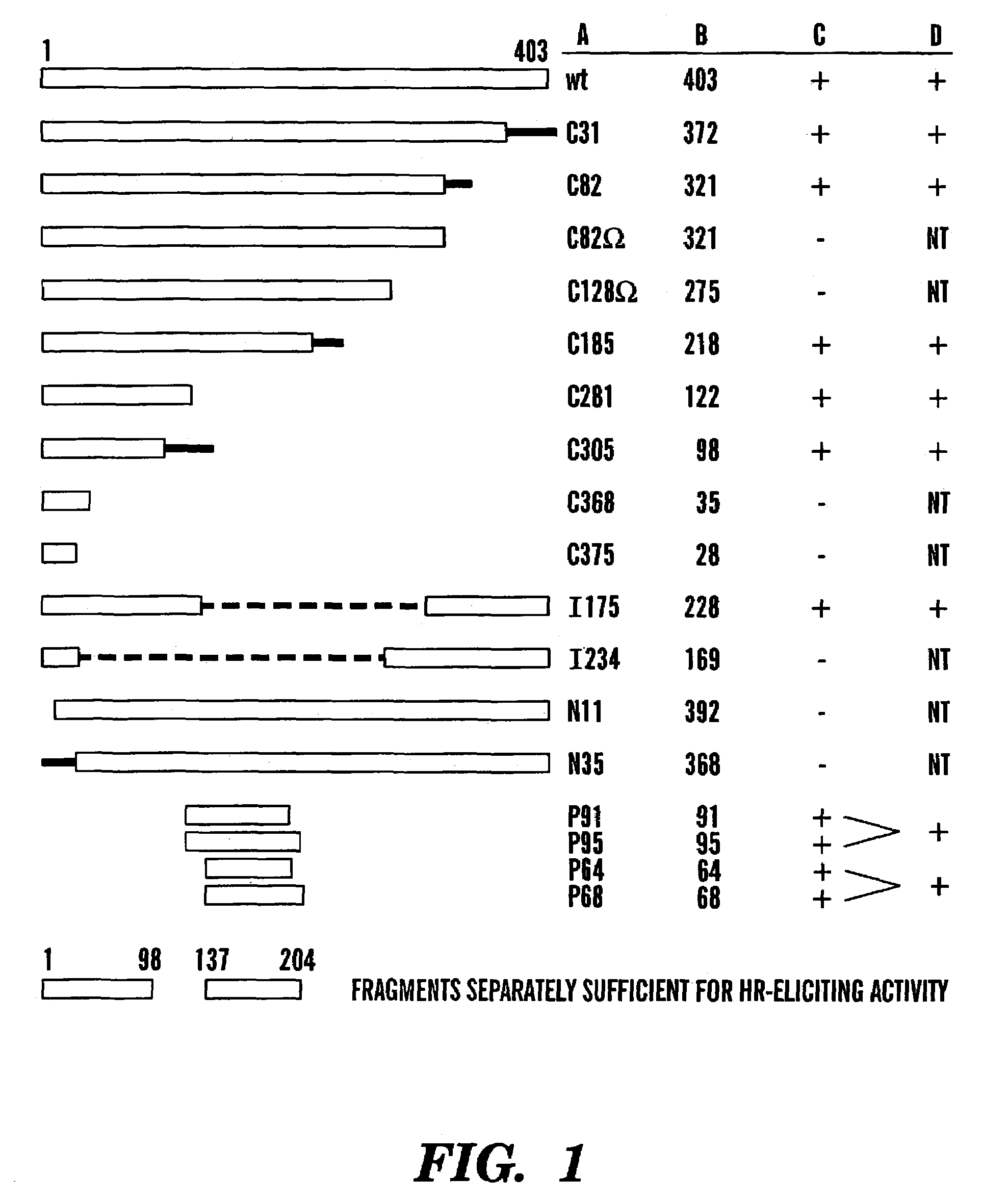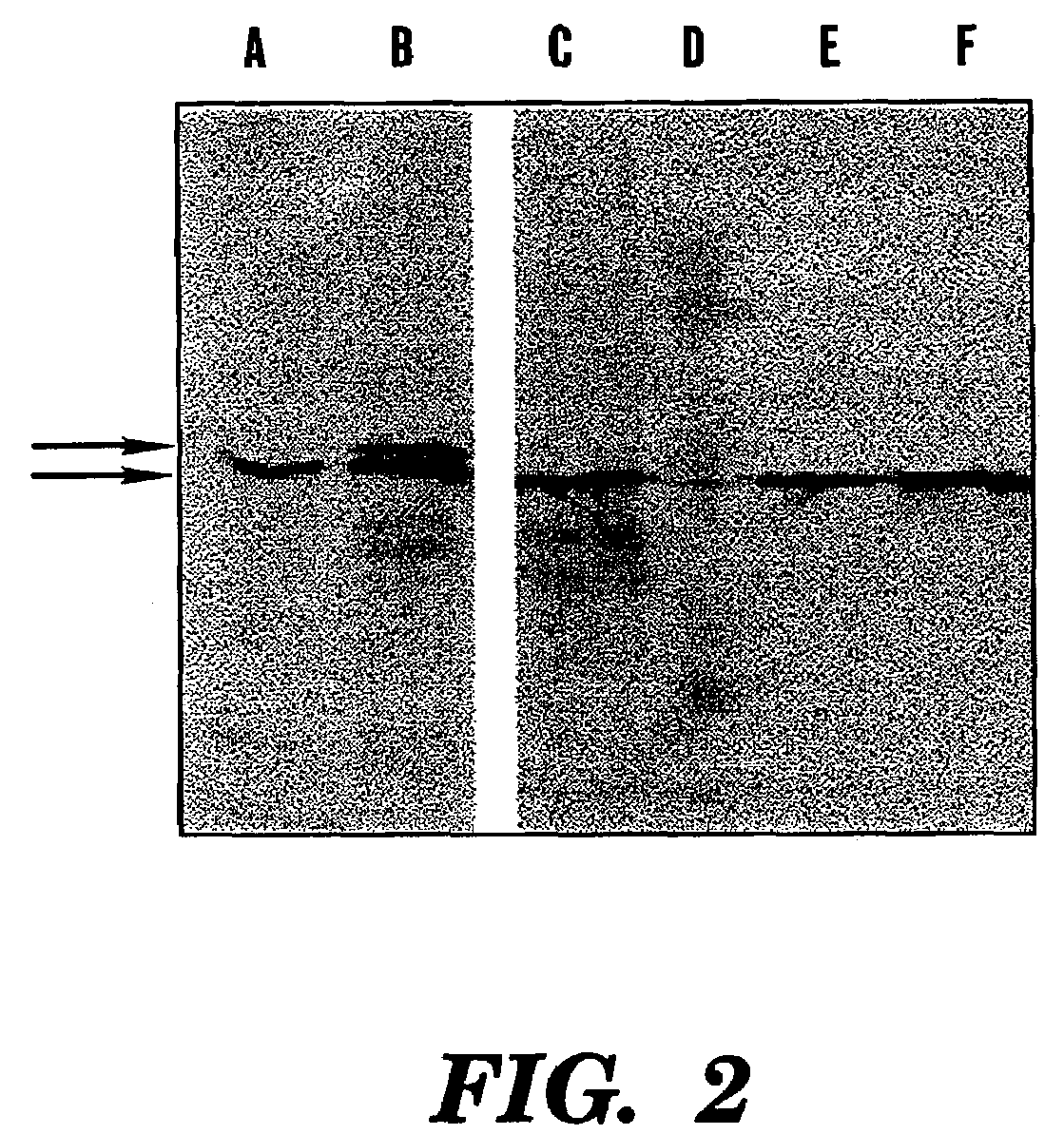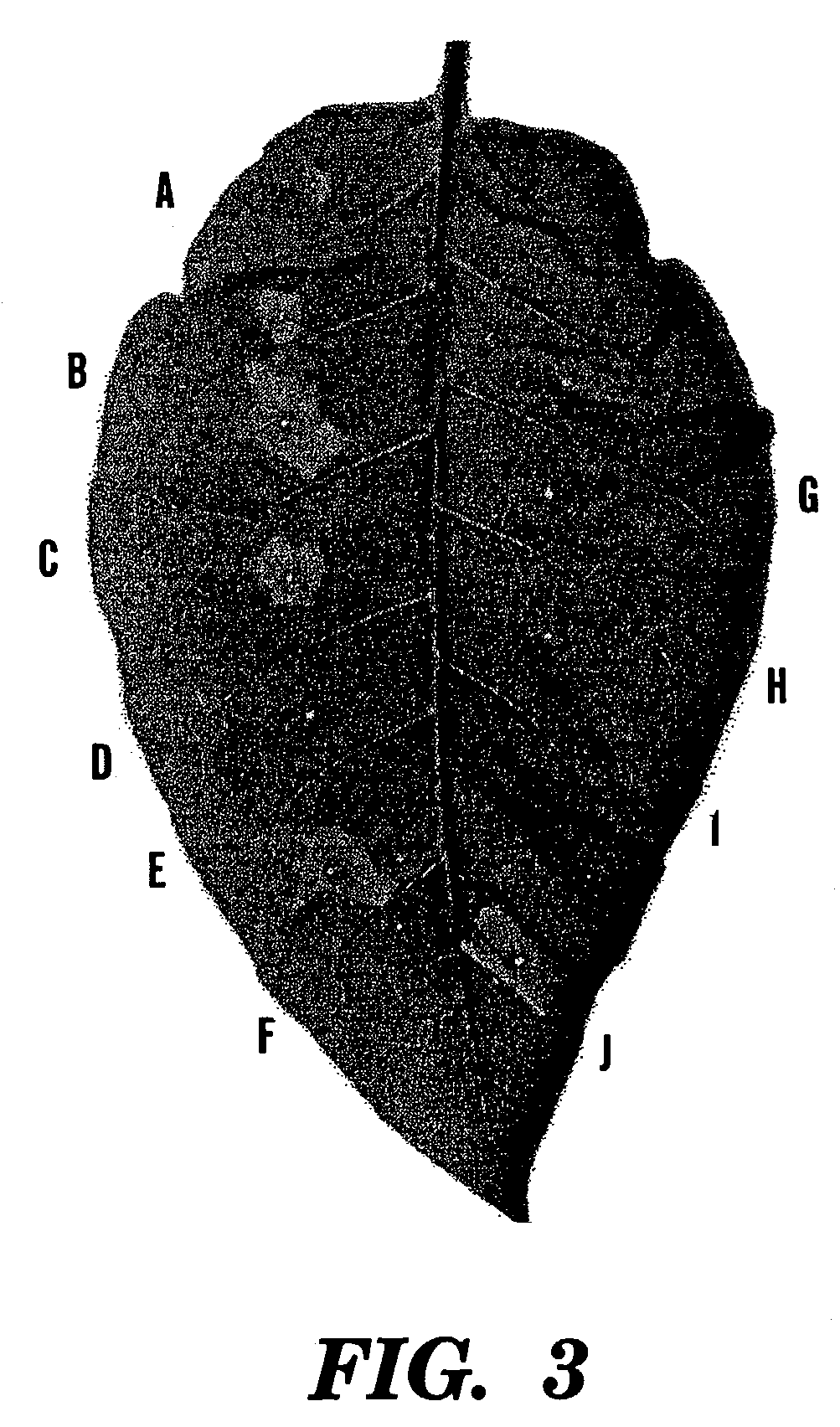Hypersensitive response elicitor fragments eliciting a hypersensitive response and uses thereof
a hypersensitive response and elicitor technology, applied in the field of hypersensitive response elicitor fragments, to achieve the effects of enhancing plant growth, reducing insect infestation, and enhancing plant growth
- Summary
- Abstract
- Description
- Claims
- Application Information
AI Technical Summary
Benefits of technology
Problems solved by technology
Method used
Image
Examples
example 1
Strains and Plasmids used
[0096]The strains and plasmids used are set forth in Table 1 below
[0097]
TABLE 1Harpin,PlasmidE. amylovoraBrief Description, Relevantfragmentnamesource strainPhenotype, Reference(or NA)pBCKS—Cmr derivative of pBluescript KS. Stratagene, La Jolla,CApBCSK—Cmr derivative of pBluescript SK. Stratagene, La Jolla,CApBSKS—pBluescript KS; Apr. Stratagene, La Jolla, CApBSSK II—pBluescript II SK; Apr. Stratagene, La Jolla, CApBW7—Mob + Tcr helper plasmid. (Rella, et al., “TransposonNAInsertion Mutagenesis of Pseudomonas aeruginosa With aTn5 Derivative: Application to Physical Mapping of thearc Gene Cluster,” Gene 33:293–303 (1985), which ishereby incorporated by reference)pCPP51—Broad host range derivative of pBSSK II containing oriNAfrom pRO1614.PCPP430321Functional hrp gene cluster of E. amylovora Ea321 clonedinto pCPP9. Beer, S.V., et al., “The hrp Gene Cluster ofErwinia Amylovora,” In Hennecke, H., and D.P.S. Verma,(eds.), Advances in Molecular Genetics of Plant-Mi...
example 2
Molecular Biology Techniques
[0098]Several approaches were employed to obtain truncated or otherwise altered versions of both E. amylovora harpins. These techniques included: (i) subcloning of restriction fragments containing portions of the gene encoding the hypersensitive response elicitor protein or polypeptide from Erwinia amylovora (i.e. hrpN) into expression vectors, by standard techniques (Sambrook, et al., Molecular Cloning: a Laboratory Manual, 2nd ed. ed. Cold Spring Harbor, Laboratory,” Cold Spring Harbor, N.Y. (1989), which is hereby incorporated by reference); (ii) insertion of an Ω-fragment (Fellay, et al., “Interposon Mutagenesis of Soil and Water Bacteria a Family of DNA Fragments Designed for in vitro Insertional Mutagenesis of Gram-Negative Bacteria,”Gene 52:147–154 (1987), which is hereby incorporated by reference) into hrpN; (iii) site-specific mutagenesis approaches (Innis, et al., PCR Protocols. A Guide to Methods and Applications, Academic Press San Diego, Cali...
example 3
Protein Expression
[0099]For expression from T7 promoters, T7 RNA polymerase-dependent systems were used. These systems utilized either strain E. coli BL21(DE3) (Studier, et al., “Use of Bacteriophage T7 RNA Polymerase to Direct Selective High-Level Expression of Cloned Gene,”J. Mol. Biol. 189:113–130 (1986), which is hereby incorporated by reference), or plasmid pGP1-2 (Tabor, et al., “A Bacteriophage T7 DNA Polymerase / Promoter System for Controlled Exclusive Expression of Specific Genes,”Proc. Natl. Acad. Sci., USA 82:1074–1078 (1985), which is hereby incorporated by reference) in E. coli DH5α. Expression of hrpN from the T7 promoter was induced by addition of IPTG to a final concentration of 0.4 mM. For expression in E. amylovora Ea321 (i.e. harpinEa) or Ea273, pGP1-2 was introduced by transformation with a 42° C. heat shock for 10 minutes, or by electroporation (Biorad Gene Pulser™). Hypersensitive response (i.e. HR)-eliciting activity was screened in tobacco cv. Xanthi leaves by...
PUM
| Property | Measurement | Unit |
|---|---|---|
| molecular weight | aaaaa | aaaaa |
| molecular weight | aaaaa | aaaaa |
| molecular weight | aaaaa | aaaaa |
Abstract
Description
Claims
Application Information
 Login to View More
Login to View More - R&D
- Intellectual Property
- Life Sciences
- Materials
- Tech Scout
- Unparalleled Data Quality
- Higher Quality Content
- 60% Fewer Hallucinations
Browse by: Latest US Patents, China's latest patents, Technical Efficacy Thesaurus, Application Domain, Technology Topic, Popular Technical Reports.
© 2025 PatSnap. All rights reserved.Legal|Privacy policy|Modern Slavery Act Transparency Statement|Sitemap|About US| Contact US: help@patsnap.com



